How to use Voltage Modular How to make a Poly synth XNUMX
This is yosi from Chillout with Beats.
This is the second time to make a Poly synth.
Please refer to here for the previous article.
I wanted to write the actual LFO in detail, so I divided it into two parts, but I changed the schedule and this time I will explain how to use the Poly-compatible oscillator "POLY OCTAVE OSCILLATOR".
I will explain "SUPER OSCILLATOR" and "SUPER LFO" soon.
(These two modules are very similar and the aim is to improve understanding by explaining them together.)
The content of this article isVoltage Modular Core + Electro DrumsIs required.
The free version of Nucleus cannot be used because there is no module. There are four articles for Nucleus:
Those who have studied the mechanism of synths in detail are recommended to purchase it.
In this blog, I will write at least the following articles in the future.
・ Detailed usage of SUPER OSCILLATOR and SUPER LFO (addition)
・ Detailed usage of DRUM TRIGGER SEQUENCER
-Sampler1Detailed usage of
-Plug-In HostDetailed usage of
-FormulaUtilization example of
Google Translate of POLY OCTAVE OSCILLATOR + α
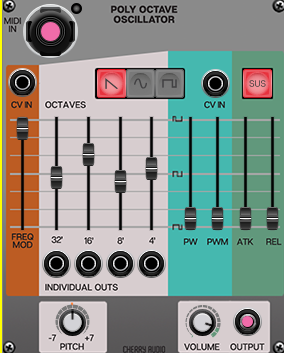
Cherry Audio's Poly Octave Oscillator is a polyphonic oscillator with four mixable octaves per voice. The MIDI input receives pitch and note-on / off messages and routes them internally to the oscillator frequency and internal amplitude envelopes, respectively.This module is the perfect starting point for an organ or lush pad!Waveform options are sawtooth, sine, and voltage-controllable variable-width pulse waves.

This oscillator is Poly, but as mentioned above, it is processed internally and becomes Mono at the time of output.It's hard to understand. The easiest way to use it is to connect "MIDI" and "OUT" as shown below, and you will hear the sound of a normal synth.
Inputs, Outputs, and Controls
MIDI In– This MIDI input jack receives polyphonic pitch and note-on / off messages from your MIDI controller or host DAW.This is usually connected to the "MIDI From Host" output of the I / O panel.
Freq Mod CV In jack– Control voltage input for external modulation of oscillator frequency. Useful for adding vibrato with LFOs, siren noise, envelope controlled pitch sweeps, and more.
Freq Mod– Freq Mod Attenuates the signal received by the CV injack. No modulation occurs at 0%. At 100%, the + / -5V signal modulates the pitch up and down an octave.
Octaves and Individual Out jacks– The slider acts as a 4-octave mixer for the oscillator.Each octave labeled in traditional organ footage is simultaneously output to the main output and its individual output jacks with the amplitude specified by the attenuation slider.
Waveform Selector– Select the oscillator waveform.Options are sawtooth, sine, and voltage-controllable variable-width pulse waves.
PW (pulse width)– Set the pulse wave width or "duty cycle".This slider does not affect the other two waveforms.The default setting of 2% outputs a perfect square wave rich in odd harmonics.Moving the slider up or down will shorten or lengthen the duty cycle and even in extreme cases the sound will be dimmed.
PWM CV In jack– Connect an LFO, envelope generator or other mod source here to continuously change the width of the pulse wave.This is a proven analog synthesis trick for adding serious flavors to your patches!
PWM– Sets the amount of pulse width modulation by attenuating the signal received by the PWM CV injack.
Attack– Adjusts the time it takes for the internal amplitude envelope to rise from zero to the maximum level.
sustain– This button enables or disables the sustain stage of the internal amplitude envelope.After the specified attack time, the envelope remains at maximum volume until the key is released, or immediately jumps to the envelope's release stage.
Release– Adjusts the time it takes for the internal amplitude envelope to return from maximum volume to zero after the release phase is activated.
Pitch– This is an oscillator fine-tuning control.The oscillator frequency can be shifted up and down from 0.01 semitones (1 cent) to 7 semitones.
Output jack and volume attenuator– Main output and volume control for 4 mixed octaves.
This alone is not interesting, so here is an example unique to modularity.
How to use the sequencer with POLY OCTAVE OSCILLATOR
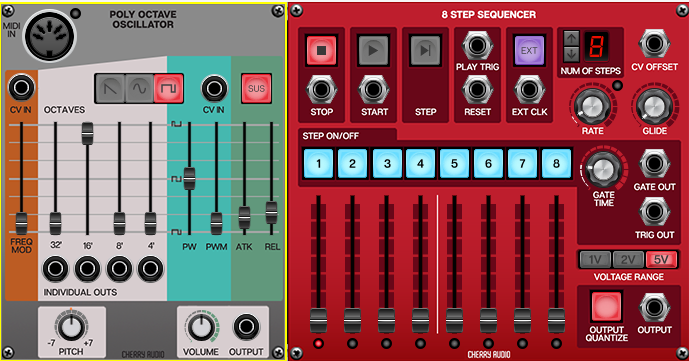
As you can see from this image, the input of "POLY OCTAVE OSCILLATOR" is MIDI, while the input of "8-Step-Sequencer" is CV OUTPUT.
I can't connect.
That's where "CV To MIDI" is used.
You can use it from "8-Step-Sequencer" by wiring as follows.
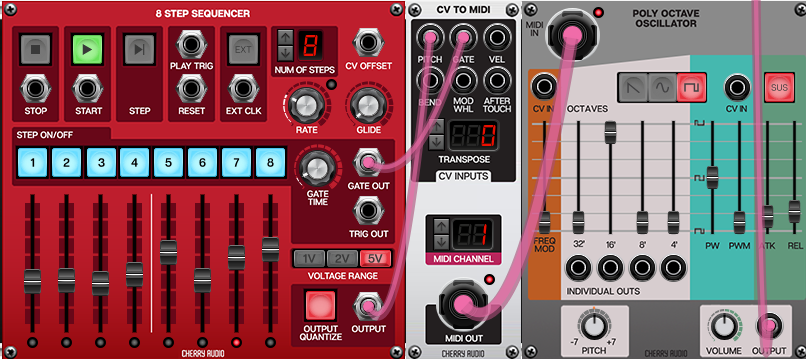
However, since this is a thing, there is no point in using a Poly synth.
So, let's use three "8-Step-Sequencer" to make a three-tone poly.
The method is simple and uses 8 "3-Step-Sequencer" and 3 "CV To MIDI".
Since it is very easy, I recorded the place to connect from the following state with a video.

First, connect the part where the sound comes out.
Next, let the sequencer work together.
I made it for a while, but I'll just give you a video.
(The sound is not compressed, but it actually sounds a little thicker.)
I haven't done anything difficult, so if you look at it, you'll understand. (If there is demand, I will explain it)
How to use Voltage Modular How to make a Poly synth XNUMX Summary
Since the explanation at the end is rough, I will add it within a few days.
Patmi I thought that Voltage Modular couldn't be used very much, but I can do quite a lot.
I will write articles about "SUPER OSCILLATOR" and "SUPER LFO" soon.

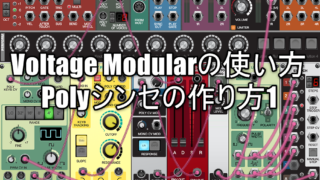
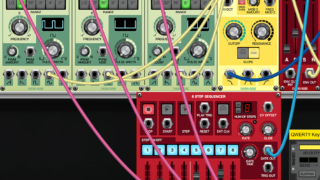
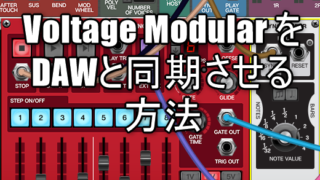
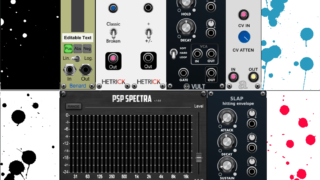

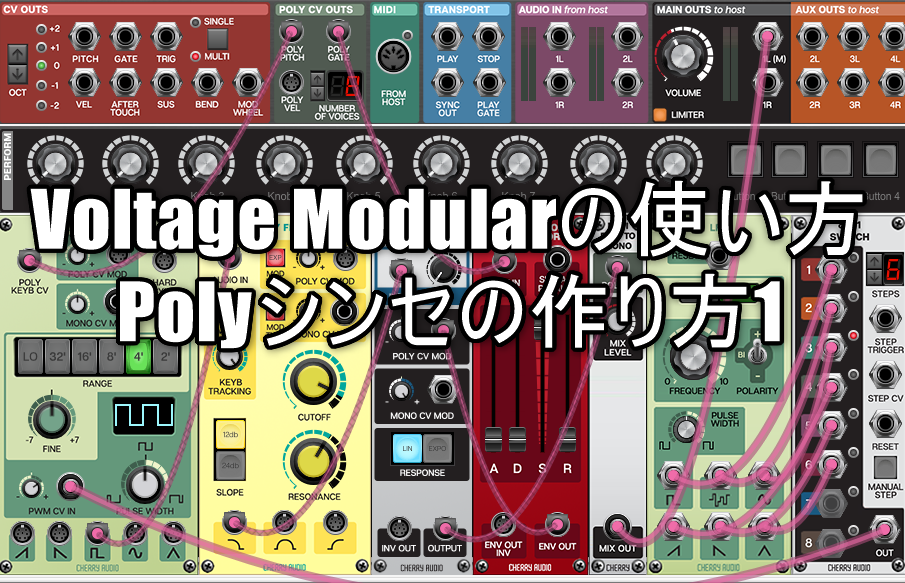
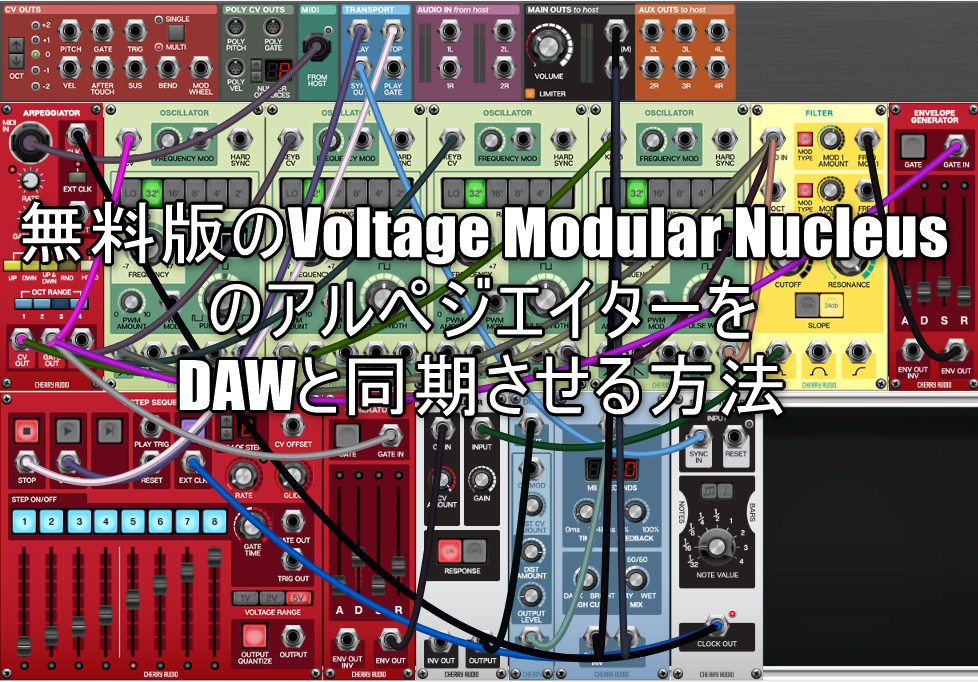
Comment